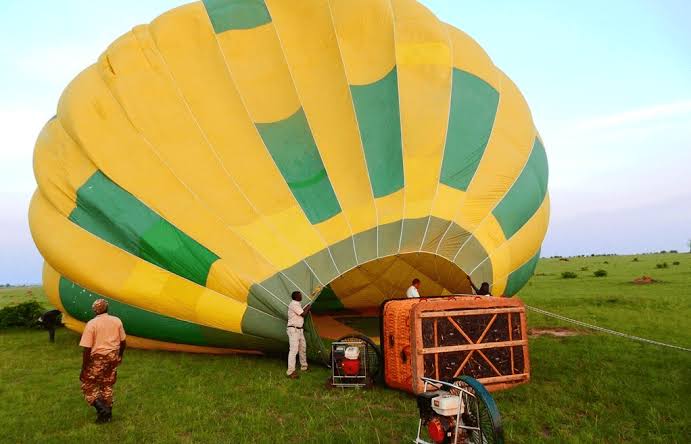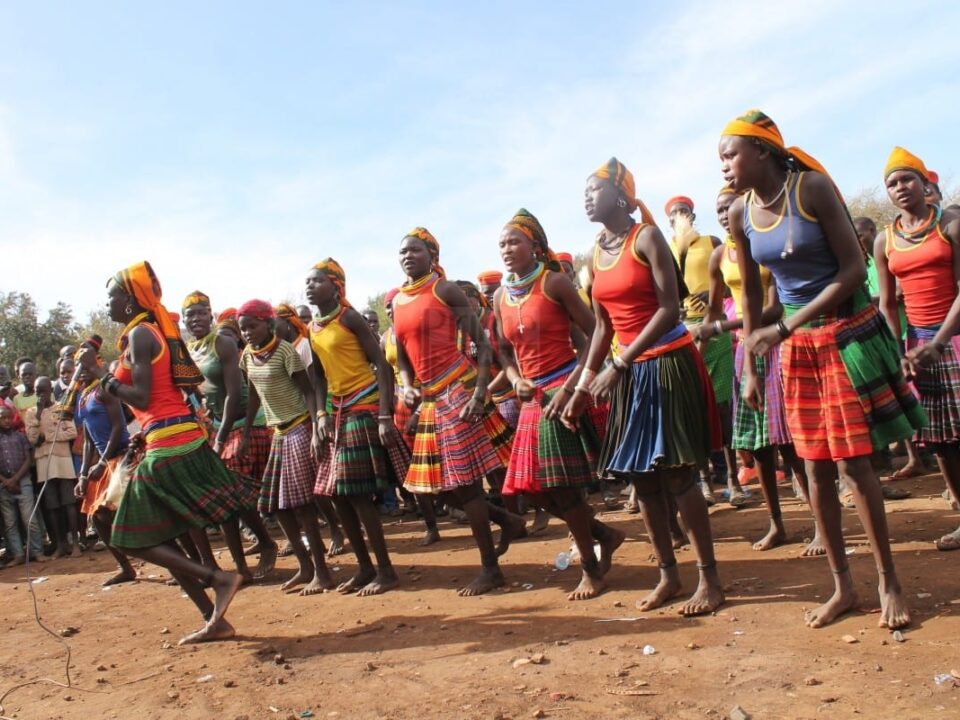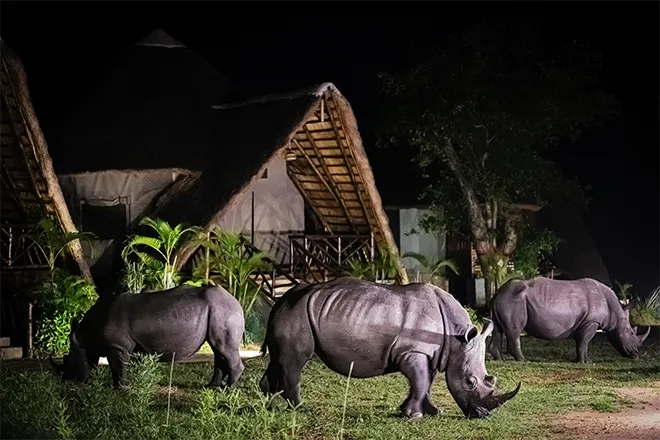- GET IN TOUCH WITH US:
- +256 753518160
- +256 777842166
- info@experiyatourcompany.com

Can I use drones in Kenya’s parks?
November 20, 2025
Is April a good month for safari in Kenya?
November 20, 2025What’s the Weather Like in Kenya Year-Round?
Kenya’s magical landscapes—ranging from expansive savannahs to misty highlands, warm coastal shores, and semi-arid northern plains—create a fascinating mosaic of climates. For travellers planning a safari, a beach holiday, or a photography expedition, understanding Kenya’s weather patterns is essential. The country’s diverse ecology means that weather varies significantly depending on region, altitude, season, and proximity to the Indian Ocean. Yet one of the most striking truths about Kenya is that it is a destination you can comfortably visit year-round, each season offering something special and uniquely beautiful. So, what’s the weather like in Kenya throughout the year?
Kenya straddles the equator, which stabilizes temperatures compared to countries farther north or south. Instead of four traditional seasons, Kenya experiences cycles of wet and dry seasons, with temperature changes influenced more by altitude than latitude. Knowing what to expect season by season helps travellers plan their ideal experiences, whether that involves witnessing the Great Migration in the Maasai Mara, photographing elephants beneath Mount Kilimanjaro in Amboseli, hiking the cool highlands, or relaxing on the sun-drenched coastline.
This detailed guide explores Kenya’s year-round weather, regional climate variations, and what each season means for travel, wildlife experiences, and photography.
Kenya’s Climate Basics: Altitude Matters More Than Latitude
Despite its equatorial location, Kenya’s climate is surprisingly varied. This diversity arises primarily from differences in elevation:
Lowland regions such as the coast and northern Kenya are warm to hot year-round. Mid-altitude areas like Nairobi, Nakuru, and Mount Kenya foothills are mild and pleasant. High-altitude regions such as the Aberdares, Mount Kenya, and the Mau Escarpment experience cool days and cold nights. Savannah regions like the Maasai Mara, Tsavo, Samburu, and Amboseli tend to be warm days with cooler nights. Because the equator runs through Kenya, daylight hours remain consistent year-round, with sunrise typically between 6:15–6:45 a.m. and sunset around 6:30–7:00 p.m.
Dry Season (June to October): Kenya’s Most Popular Travel Season
The long dry season—from June through October—is widely considered the best time for wildlife viewing and general travel.
Weather Overview
Days are sunny, warm, and dry. Temperatures are comfortable, usually:
18–28°C (64–82°F) in savannah regions 24–30°C (75–86°F) at the coast 10–20°C (50–68°F) in highlands like Nairobi and Mount Kenya Nights can be chilly, especially in the Mara, Laikipia, and highland areas.
This season offers minimal rainfall and low humidity, making it ideal for safaris and outdoor adventure.
What This Means for Travellers
Wildlife congregates around water sources—making sightings easier and more dramatic. Vegetation is less dense, offering clearer visibility for photography. Roads are in their best condition, allowing smooth game drives. The Great Migration peaks in July–October in the Maasai Mara, making this season exceptional for photographers, safari enthusiasts, and first-time visitors.
Who Will Love This Season?
Safari photographers Big Five seekers Honeymooners Migration enthusiasts Wildlife documentarians Anyone seeking excellent weather and clear skies
Short Rains (November to December): Green and Beautiful
Kenya’s “short rains” arrive around mid-November, usually continuing through early December. These rains are brief, refreshing, and often fall in late afternoons or overnight.
Weather Overview
Warm days with scattered showers Vibrant green landscapes Clear skies between rainfalls Temperatures:
20–30°C (68–86°F) in most safari areas 24–32°C (75–89°F) at the coast Highlands remain cooler and crisp
What This Means for Travellers
This season brings striking beauty to Kenya:
Lush green grasslands Dramatic cloud formations Flowers blooming Newborn wildlife—especially wildebeest, zebras, and antelopes Pleasant temperatures with fewer tourists The light after short rains is incredible for photographers, with saturated colors and dramatic skies.
Who Will Love This Season?
Nature lovers Photographers seeking vibrant scenes Budget travellers Wildlife watchers wanting baby animals Bird enthusiasts (migratory birds arrive)
Warm Holiday Season (Late December to February): Dry, Sunny, and Vibrant
After short rains taper off, Kenya enters a sunny, warm period from late December to February. This is a popular time for holiday travellers.
Weather Overview
Clear blue skies Sun-filled days Low humidity in most regions Hotter temperatures along the coast Warm, clear evenings in safari areas Average temperatures:
20–30°C (68–86°F) inland 26–33°C (79–91°F) along Indian Ocean coast
What This Means for Travellers
This is an ideal season for:
Beach holidays in Diani, Watamu, and Lamu Predator photography in the Mara (lion and cheetah activity peaks) Birdwatching—migratory species thrive Hiking and outdoor activities Clear starry skies for night photography
Who Will Love This Season?
Beach honeymooners Families on holiday Photographers Wildlife enthusiasts Warm-weather travellers
Long Rains (March to May): Kenya’s Wettest Months
The long rains begin around March and peak in April and May. This season sees heavier and more consistent rainfall, often in the form of dramatic afternoon or evening storms.
Weather Overview
Expect:
Heavy showers (often short bursts) Overcast mornings Moist, humid conditions Lush landscapes bursting with color Temperatures remain warm:
18–28°C (64–82°F) inland 25–30°C (77–86°F) at the coast Nights remain comfortable, though highlands can be cold.
What This Means for Travellers
This is the least busy travel season due to rainfall, but it offers:
Lower lodge and safari prices Stunning green landscapes Few tourists Birds in full breeding plumage Dramatic, atmospheric photography opportunities Some parks (like Tsavo or Amboseli) become incredibly beautiful after rains.
However:
Some dirt roads may become muddy and slippery Occasional flight delays can occur Thick vegetation may obscure wildlife sightings
 Who Will Love This Season?
Who Will Love This Season?
Budget travellers Photographers seeking moody, dramatic scenes Birdwatchers Slow-travel enthusiasts Couples seeking quiet, private travel
Regional Weather Variations in Kenya
Because Kenya’s landscapes are so varied, each region has its own weather character.
Maasai Mara
Mild year-round, often chilly at night Best time: June–October, January–February Short rains create beautiful green landscapes
Amboseli
Hotter and drier than the Mara Known for clear skies and dramatic mountain views Best photography months: January–March, August–October
Samburu and Northern Kenya
Hot, dry, semi-arid Extreme heat in Feb–March Cooler but dusty in July–October Beautiful after rains with blooming desert flora
Nairobi & Central Highlands
Mild and temperate year-round Cool nights, especially June–August Ideal climate for most travellers
Kenya Coast (Diani, Watamu, Lamu)
Warm and humid year-round Best months: December–March & July–September Rainy April–May
Tsavo
Hot and dry Best months: June–October Rains bring vibrant landscapes and dramatic skies
What the Weather Means for Wildlife
Kenya’s wildlife cycles revolve around rainfall patterns:
Birth season peaks in November–December Predators thrive when prey herds expand Migration enters Maasai Mara in July–October Birds migrate in November–February Elephant herds move based on water availability The best safari conditions occur in dry seasons, while rainy seasons bring rich vegetation and new life.
Packing Tips for Every Weather Season
Dry Season
Light layers Warm jacket for morning drives Cap or hat Sunglasses Sunscreen
Rainy Season
Waterproof jacket Quick-dry clothing Waterproof shoe covers Camera rain covers
Coastal Regions
Light cotton clothing Sandals Sun protection Aloe gel for sun exposure
Kenya’s Weather in Summary
Kenya truly offers year-round travel opportunities:
Dry season: Best for wildlife viewing and safaris Short rains: Beautiful, green, fewer crowds Warm holiday season: Excellent beaches, clear skies Long rains: Green, atmospheric, quiet, budget-friendly Whatever time you choose, Kenya’s beauty remains constant, only changing tone and mood with the seasons.
Book Your Kenya Adventure with Experiya Tour Company
For travellers seeking expertly planned safaris and coastal holidays tailored to Kenya’s seasonal weather patterns, Experiya Tour Company offers personalized itineraries crafted around your interests and preferred climate. Their deep regional knowledge ensures you experience Kenya at its very best—whether you dream of the Great Migration, sun-soaked beaches, lush green landscapes, or quiet off-season escapes. When planning your Kenya adventure, trust Experiya Tour Company to deliver a seamless, weather-optimized, and unforgettable journey.




